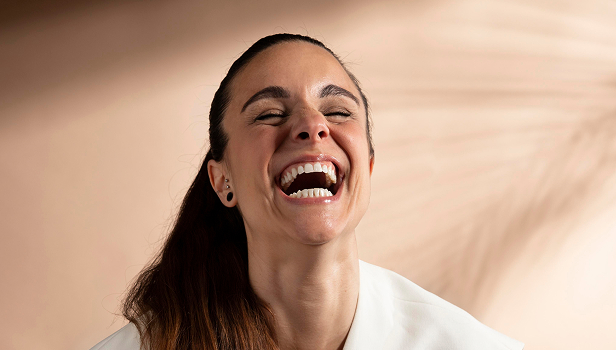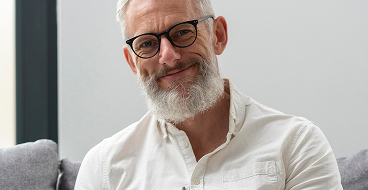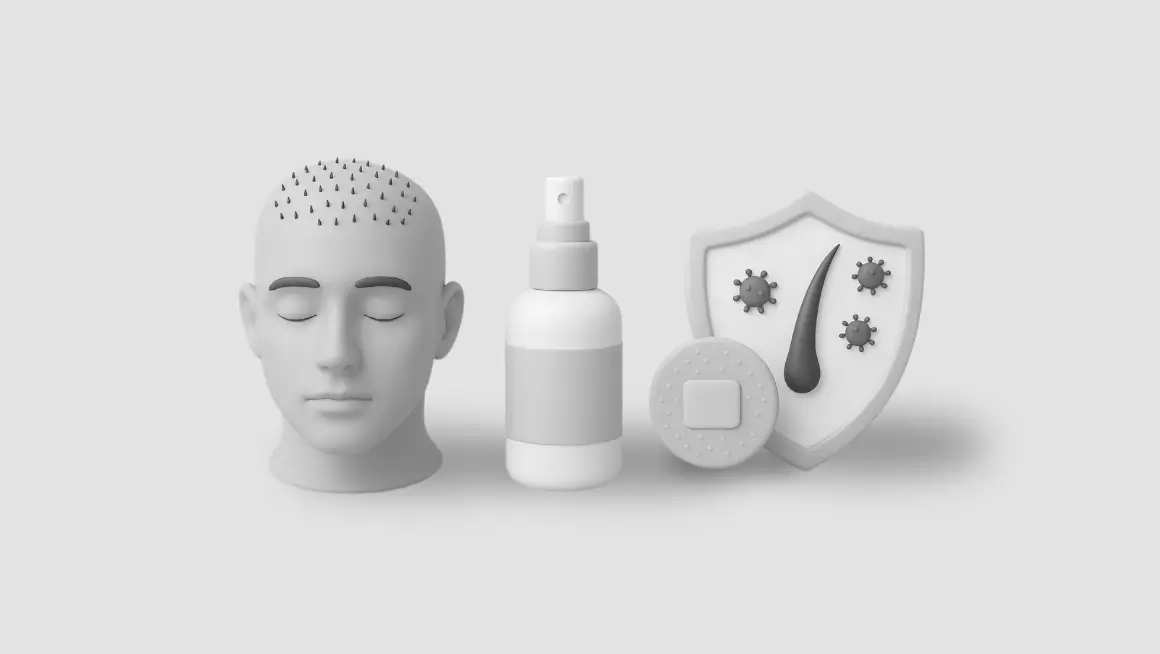Your hair transplant is done — but your journey to thicker, healthier hair is just beginning. The days and weeks following your procedure are crucial, and how you care for your scalp now can make or break your results. At Ideal of MeD, we emphasize smart, proactive aftercare to help you avoid the most common post-op issues: scabs, infections, and folliculitis.
Here’s everything you need to know to protect your new grafts, support healing, and avoid unnecessary setbacks.
Why Post-Op Care Matters So Much
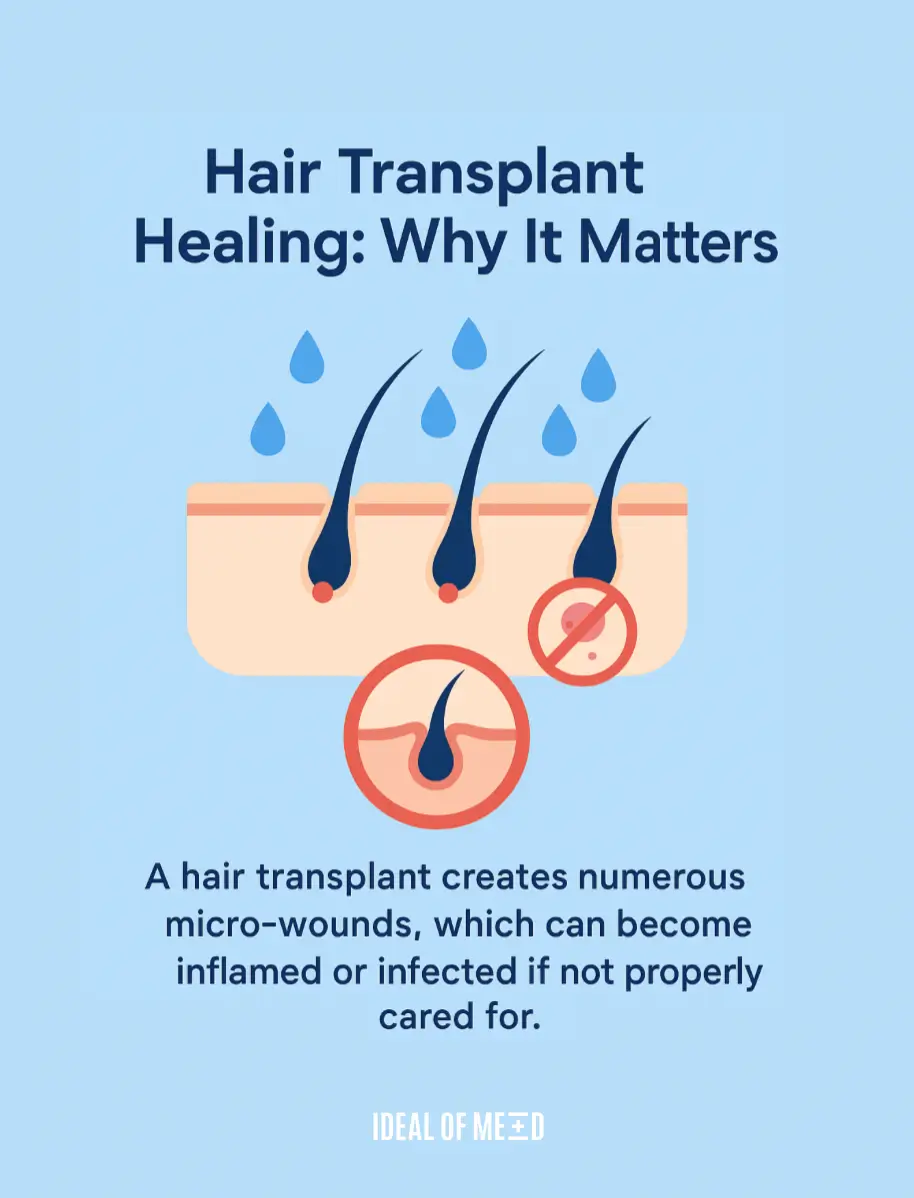
A hair transplant creates hundreds to thousands of tiny micro-wounds across your scalp. While this is a normal and necessary part of the process, these wounds need the right environment to heal — or complications can occur.
If neglected, they can become inflamed or infected, leading to scarring, poor graft retention, or conditions like folliculitis (a painful infection of the hair follicles).
At Ideal of MeD, we’ve developed a tried-and-tested post-op protocol to help you heal smoothly and achieve the best outcome possible.
The 3 Biggest Risks After a Hair Transplant (And How to Avoid Them)
1. Scabs
Scabs are a normal part of the healing process — but picking at them or letting them build up can lead to graft loss, infection, or delayed recovery.
2. Infections
When bacteria enter those delicate healing sites, it can trigger swelling, pus, fever, or even permanent follicle damage.
3. Folliculitis
Folliculitis looks like acne but feels sore and inflamed. It’s typically caused by bacteria, fungi, or irritation from improper washing.
Idealofmed’s Post-Op Self Care Protocol
Step 1: Immediate Post-Surgery Hygiene (Days 0–2)
Your first few days are the most sensitive. Be extra careful:
- Don’t touch, scratch, or rub your scalp, no matter how itchy it gets.
- Use only the Ideal of MeD Aftercare Spray and Shampoo as directed.
- Sleep with your head elevated at a 45° angle to minimize swelling and avoid rubbing grafts against pillows.
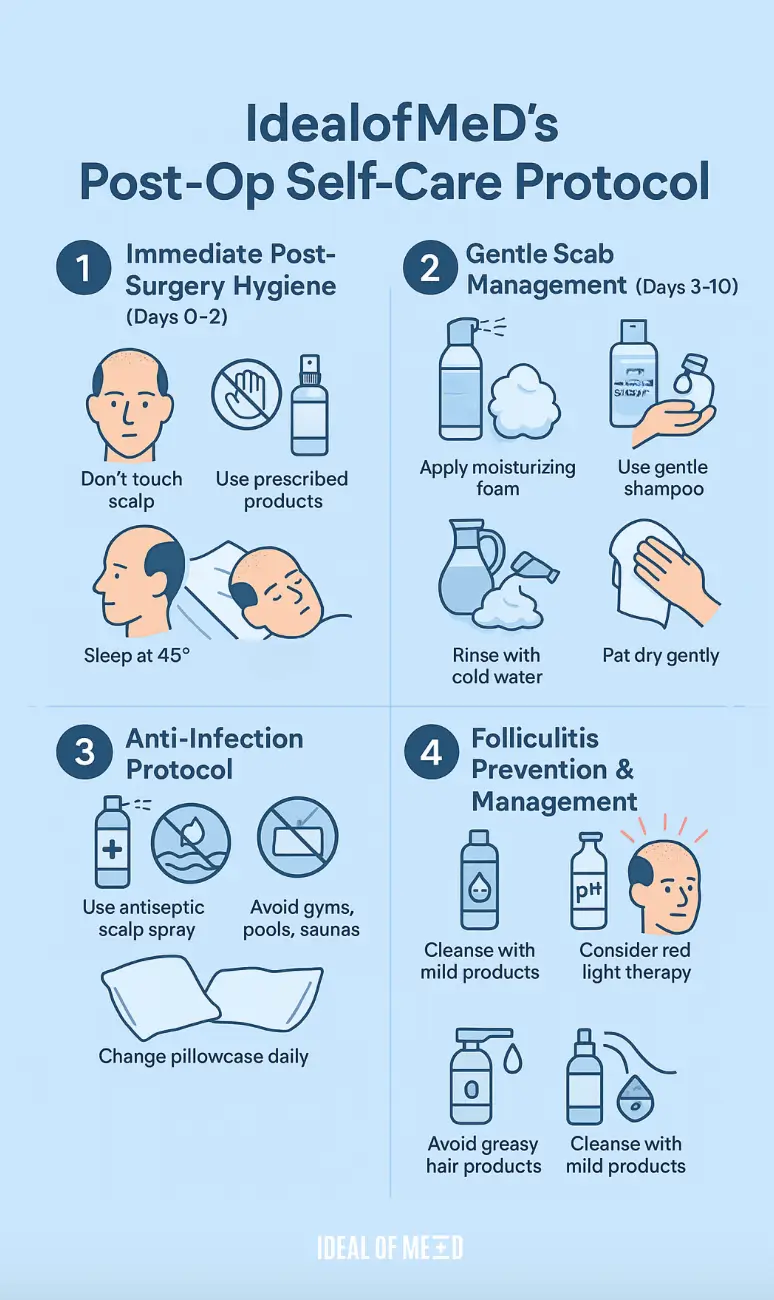
Step 2: Gentle Scab Management (Days 3–10)
As part of the natural healing process, scabs will form around each transplanted graft. It’s crucial that they fall off on their own — never pick or scratch them, as this can dislodge grafts, delay healing, or cause infection.
Here’s how to care for your scalp during this phase:
- Apply Moisturizing Foam Daily
Generously dab the foam onto both the transplanted and donor areas — no rubbing. Let it sit for 12–14 minutes to hydrate the scalp, reduce itching, and soften scabs. - Use the Hair Restoring Shampoo
Lather the shampoo in your hands before applying. Gently dab the foam onto the transplanted area. From Day 5, you can begin lightly rubbing the shampoo into the donor area as instructed. - Rinse with Cold Water
Avoid water pressure. Instead, use a carafe or bottle to pour cold water gently over your scalp. Hot water can irritate healing tissue. - Pat Dry with a Soft Paper Towel
Carefully dab the area dry — no rubbing. This protects the grafts and prevents friction that could lead to irritation or infection. - Apply Bepanthen Plus Cream (Donor Area Only)
Starting from Day 1, Bepanthen Plus Cream is applied to the donor area by our nurses at the clinic for the first three days. From Day 4 onwards, you can gently apply the cream yourself. Its antibacterial and skin-healing properties help reduce the risk of infection and promote recovery. - Avoid tight hats, sun, and sweat
Skip fitted caps or anything that could rub the scalp. Opt for breathable, loose bucket hats, avoid direct sun exposure, and avoid excessive sweating.
Repeat this process daily until Day 10. By then, most scabs will naturally begin to fall off. If scabs persist after Day 14, contact your Ideal of MeD specialist for guidance. Learn more about how to wash your scalp at home after a transplant.
Scabs will form around each transplanted graft, and it’s important to let them fall off naturally — do not pick them.
For those who prefer extra peace of mind during their recovery, consider our Executive Package. With this package, you can stay with us for 10 days, allowing our expert nurses to handle every step of the healing process, including washing and removing the scabs, minimizing the risk of complications.
Step 3: Anti-Infection Protocol
Ideal of MeD takes a preventive approach to infection risk:
- Use antiseptic scalp spray as prescribed in your aftercare kit.
- Avoid public gyms, pools, or saunas for at least 2 weeks.
- Change your pillowcase daily during the first week.
- Wash your hands thoroughly before touching or applying anything to your scalp.
If you notice signs like redness, warmth, swelling, pus, or pain — contact our team immediately. Early intervention is key.
Step 4: Folliculitis Prevention & Management
Folliculitis — an inflammation of the hair follicles — can develop weeks after your transplant, especially if you have oily skin, sweat heavily, or naturally coarse, curly hair. This includes individuals of African or Middle Eastern descent, who may be more prone to folliculitis due to the way curly hair can grow back into the skin, causing irritation or infection.
Here’s how to stay ahead of it:
- Avoid greasy or heavy hair products until the scalp is fully healed.
- Cleanse regularly with gentle, pH-balanced products to keep follicles clear.
- Consider red light therapy to calm inflammation and support healing follicles (available at Ideal of MeD).
- Stay hydrated and reduce sugar intake — your diet directly impacts skin health and inflammation.
- If folliculitis develops, our team may recommend topical antibiotics, gentle exfoliation, or targeted anti-inflammatory treatments, depending on the severity and hair type.
MSC Exosome Therapy: Boost Your Results
At Ideal of MeD, we offer MSC Exosome Therapy to supercharge the healing process and reduce post-op complications. This therapy:
- Reduces inflammation and speeds up tissue repair
- Enhances immune response to minimize infection risk
- Improves skin texture and follicle stability
Especially helpful for those with sensitive or acne-prone skin, this regenerative treatment can make your post-op journey smoother and safer.
Final Thoughts
Post-op care isn’t just about avoiding complications — it’s about ensuring your hair transplant delivers the full, long-lasting results you came for. At Ideal of MeD, we guide every patient step by step, from immediate aftercare to long-term scalp health.
Avoiding scabs, infections, and folliculitis comes down to three things:
- Following instructions to the letter
- Creating a clean, calm environment for your scalp
- Reaching out to our team if anything feels off
You’ve done the hard part. Now, it’s time to protect your progress. Book your free consultation with Ideal of MeD and let our experts guide you and join the Hair Back App community.
FAQ: Post-Op Hair Transplant Care
Typically between Days 7 and 10. If they last longer than two weeks, contact your Ideal of MeD specialist.
Small pimples may indicate folliculitis. If they’re painful or spreading, let us know right away.
Look for redness, swelling, pus, or increasing pain. Don’t wait — reach out immediately.
Avoid intense or sweat-heavy activity for at least 2 weeks to prevent bacteria exposure and irritation.
Yes — it’s one of the best tools to calm inflammation and support follicle health during recovery.
